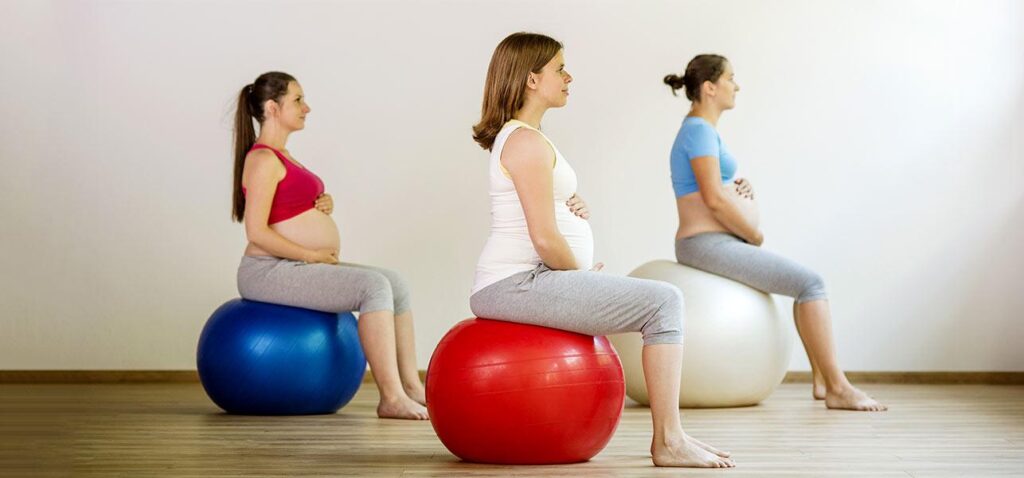Exercise during pregnancy is a topic surrounded by many myths and misconceptions. Expectant mothers are often unsure about which activities are safe, how much exercise they should do, and whether working out could pose a risk to their baby. The truth is that staying active during pregnancy can bring numerous benefits to both the mother and the baby. In this article, we will debunk some common myths about prenatal exercise and reveal the facts you need to know for a safe and healthy pregnancy.
Myth 1: Exercise During Pregnancy Can Harm the Baby
Fact: One of the most common myths is that exercising during pregnancy can harm the baby or leads to miscarriage. Some may believe that exercises during pregnancy can cause premature rupture of membranes. In fact, regular, moderate exercise is highly beneficial for both mom and baby. It improves circulation, reduces the risk of gestational diabetes and control preeclampsia, and excessive weight gain, and even prepares the body for labor. However, it’s important to avoid exercises that put excessive pressure on the abdomen or involve high risk of falling. However, if you have specific health concerns or complications, always consult your healthcare provider before beginning an exercise routine.
Myth 2: You Should Avoid All Abdominal Exercises
Fact: Many believe that abdominal exercises should be avoided entirely during pregnancy. The truth is that gentle core strengthening is beneficial for supporting the back and pelvis during pregnancy. Exercises like pelvic tilts, seated knee lifts, and modified planks are generally safe and can help prevent back pain. However, traditional crunches and sit-ups should be avoided as the pregnancy progresses due to the risk of diastasis recti (abdominal muscle separation).
Myth 3: You Shouldn’t Start Exercising If You Weren’t Active Before Pregnancy
Fact: It’s a common misconception that women who weren’t active before pregnancy shouldn’t start exercising once they become pregnant. While it’s true that pregnancy isn’t the time to start a high-intensity training regimen, it’s completely safe—and recommended—to start incorporating light exercise like walking, swimming, or prenatal yoga. These activities can help improve mood, increase energy levels, and reduce pregnancy discomforts like back pain and swelling.
Myth 4: You Should Keep Your Heart Rate Below 140 Beats Per Minute
Fact: The idea that a pregnant woman should keep her heart rate below 140 beats per minute during exercise is outdated. Every woman’s fitness level and pregnancy are different, and the intensity of exercise should be based on how you feel rather than a specific number. The “talk test” is a good guide—if you can carry on a conversation comfortably while exercising, you’re likely at a safe intensity. Always listen to your body and avoid overexertion.
Myth 5: Lifting Weights During Pregnancy Is Dangerous
Fact: Lifting weights is not inherently dangerous during pregnancy. In fact, strength training can be very beneficial for maintaining muscle tone, improving posture, and preparing the body for labor. The key is to lift lighter weights with more repetitions and avoid straining or holding your breath. Focus on controlled movements, avoid heavy lifting, and steer clear of exercises that require you to lie flat on your back after the first trimester.
Myth 6: You Should Avoid All High-Impact Exercise
Fact: High-impact exercises like running are not off-limits for everyone. If you were an experienced runner before pregnancy, you can usually continue running, with modifications as needed. However, it’s essential to listen to your body and make adjustments if you start feeling discomfort or fatigue. For those who were not accustomed to high-impact exercises pre-pregnancy, it’s better to stick to low-impact options like walking, swimming, or stationary cycling.
Myth 7: Exercising During Pregnancy negatively impacts your breastfeeding
Fact: There is no evidence to suggest that moderate exercise during pregnancy can reduce the quantity or hampers the quality of breast milk. Intact, those mothers undertaking higher levels of physical activity under supervision will have lowest risk of breastfeeding cessation by 12 months. Consider adding some breast mobility exercises with deep breathing to improve breastfeeding outcomes and to improve the tone in breast muscles after delivery. The more you breastfeed, higher is your gain in balancing hormones.
Myth 8: You Should Stop Exercising If You Feel Tired
Fact: Feeling tired is common during pregnancy, especially in the first and third trimesters. While rest is important, gentle exercise can actually boost energy levels by improving circulation and releasing endorphins. Activities like prenatal yoga, stretching, or a leisurely walk can help combat fatigue and improve your overall mood. However, it’s crucial to strike a balance and listen to your body—rest when you need to, but don’t avoid all activity due to tiredness.
Myth 9: You Shouldn’t Exercise During the Third Trimester
Fact: Exercise is beneficial during every stage of pregnancy, including the third trimester. Activities such as walking, swimming, and prenatal yoga can help improve circulation, reduce swelling, and relieve discomfort. However, adjustments may need to be made to accommodate your growing belly, and it’s essential to avoid activities with a high risk of falling or abdominal trauma. Gentle stretching and pelvic floor exercises are especially helpful during the third trimester to prepare the body for labor.
Myth 10: Exercising on Your Back Is Always Unsafe
Fact: While lying flat on your back for prolonged periods is not recommended after the first trimester due to the pressure it places on major blood vessels, short durations or modified positions are generally safe. Exercises like bridge pose can be performed if they feel comfortable, but always pay attention to your body’s signals—if you feel lightheaded or dizzy, switch to a different position.
An insight from mamahood
Prenatal exercise offers a wide range of benefits, from improved physical health to reduced stress and better preparation for labor. However, it’s essential to navigate the many myths and misconceptions that surround exercise during pregnancy. Always consult with your healthcare provider before beginning or continuing an exercise routine, and remember that listening to your body is key. By incorporating safe and appropriate exercises, you can support a healthy pregnancy and feel your best throughout this special journey. For more support, feel free to connect with Mamahood Health Advisors via live chat or private message, or explore Mamadoc—your AI doctor offering tailored guidance just for you.








